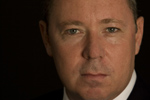 The spiralling rise in shooting crimes in Sydney’s western suburbs requires strong and sustained political, community and police action to make suburbs safe for the public, according to a Charles Sturt University (CSU) senior policing lecturer who lives in one of the affected neighbourhoods.
The spiralling rise in shooting crimes in Sydney’s western suburbs requires strong and sustained political, community and police action to make suburbs safe for the public, according to a Charles Sturt University (CSU) senior policing lecturer who lives in one of the affected neighbourhoods.Dr Hugh McDermott, a senior lecturer in law enforcement at the CSU Australian Graduate School of Policing, says, “I happen to live in a suburb that has been ringed by shooting incidents, and one shooting on the weekend was just around the corner from my home.”
Like many of his neighbours, Dr McDermott can see that politicians are seeking, but are not really offering, new strategies and solutions.
“It’s not just well organised bikie gangs but a range of criminals and business rivals, all with access to guns, that are escalating rather than settling all manner of disputes by targeted shootings.”
The NSW Bureau of Crime Statistics and Research released new statistics on 17 April - a day on which five shootings were reported in Sydney. The figures show the offence of ‘discharge firearm into premises’ rose by 41 per cent (from 71 incidents in 2010 to 100 incidents in 2011) in the two years to December 2011. Approximately half of the NSW recorded incidents of ‘discharge firearm into premises’ in 2011 was recorded in the three Sydney statistical subdivisions of Canterbury-Bankstown, Central Western Sydney, and Fairfield-Liverpool.
There have been at least 48 shootings in Sydney so far in 2012.
Dr McDermott says it is just a matter of time before hand guns become more widely used in disputes by other normally law abiding members of the public, as a result of ‘normalisation’, and before shootings follow the US trend and occur in Australian schools.
“We are not just talking about rifles here, but concealed weapons – pistols. We need new and tighter controls on pistols and ammunition. This should include a new buy-back scheme for guns, a national register and should include strengthened border control strategies because most hand guns come from overseas suppliers.
“There also needs to be a greater high-profile police presence in the suburbs most affected by these shootings, and the police response to shooting incidents needs to be immediate and unrelenting. The community will support strong and hard action by police against these criminals.”
But Dr McDermott argues that the most enduring ‘fix’ will come from the combined effects of public and community groups exerting pressure, with the support of government and police, to break the culture of gang and criminal activity that sponsors gun use as an acceptable recourse for dispute resolution.
“Communities, especially in western Sydney, need to start taking action to organise to reclaim street safety in their suburbs. If politicians and the government can’t fix this escalating problem, the community must stand up and demand an end to gun violence,” he said.





Social
Explore the world of social